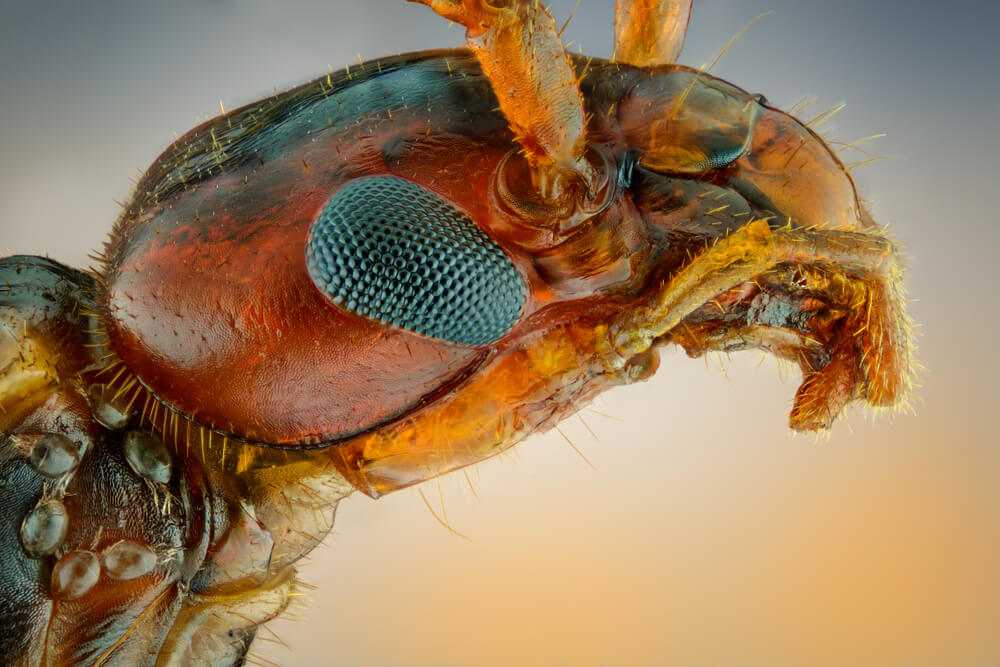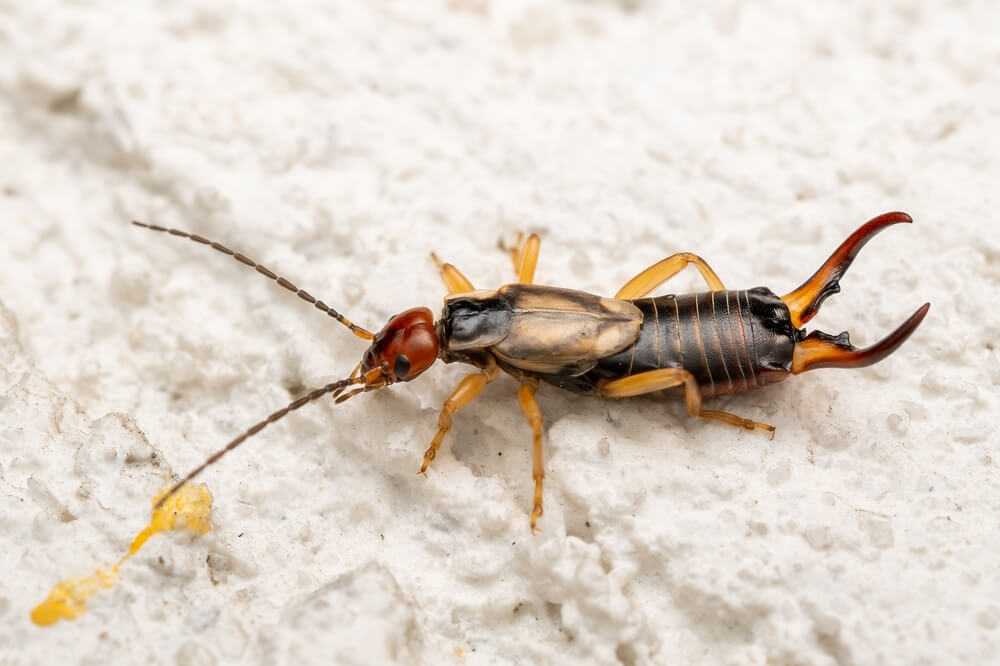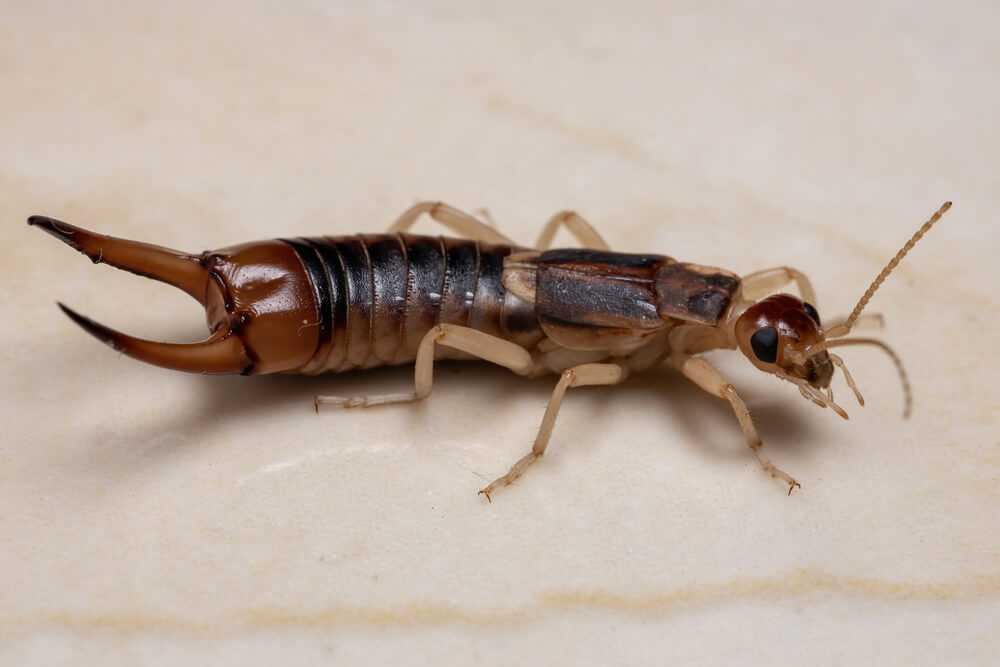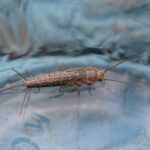Effective Earwig Control and Prevention Tips
Ever wondered what those small insects with pincers, known as earwigs, are doing in your home or garden? Are they harmful? This article answers these questions and provides tips on how to identify, control, and prevent earwig infestations.
Key Takeaways
- Understanding earwigs’ lifecycle and habits is essential for effective control and prevention, as they are nocturnal and prefer moist environments.
- Identifying signs of earwig infestations early, such as visible damage to plants and high indoor populations, is crucial for timely management.
- A combination of natural remedies and targeted chemical treatments can effectively control earwig populations, with a focus on reducing moisture and sealing entry points.
Understanding Earwigs: Lifecycle and Habits
Earwig species, which are part of the Dermaptera order, captivate with their distinctive extended bodies and chewing mouthparts. They’re notably characterized by their pincer-like cerci extending from the rear. Among these species stands out the hump earwig.
The lifespan of earwigs spans approximately one year and is influenced by a range of environmental factors that include rainfall, temperature variations, levels of humidity in their environment, availability of habitat space as well as access to food sources.
It’s essential to understand both the lifecycle and behavior patterns of earwigs for effective management measures aimed at control and prevention purposes.
Active predominantly during nighttime hours due to being nocturnal creatures, most earwig species seek refuge in damp and dark places throughout daylight periods. At night they emerge more actively when conditions become cooler and moisture levels rise, this also serves them well in predator avoidance tactics while they hunt for nourishment resources. By grasping these behaviors alongside knowledge on how they develop through life stages, we can better predict potential infestations caused by such insects thus allowing us to be proactive against them.
Earwig Lifecycle
The development of the common European earwig, along with other related species, commences beneath the ground as female earwigs deposit their eggs in soil. These females demonstrate extraordinary maternal instincts compared to many other insects by not only protecting and vigilantly watching over their eggs, but also by relocating them to more secure environments and meticulously cleaning them to avert fungal diseases. Such devoted care significantly improves the chances of survival for both young European earwigs and nymphs.
Once these eggs develop into hatchlings, the immature earwigs stay under their mother’s supervision until they experience two molts. Before reaching full maturity, these juvenile earwigs undergo an additional 4 to 5 shedding process. Implementing control strategies that focus on exploiting susceptible points within their growth cycle can augment effectiveness in managing this insect population.
Nocturnal Nature and Moisture Preference
Earwigs exhibit nocturnal behavior, engaging in activities during the night to evade predators that are active by day and to benefit from cooler, more humid conditions ideal for their foraging. This nightly routine plays a critical role in their endurance and proliferation as a species. They favor environments that maintain coolness and moisture—conditions crucial for their existence.
To escape daytime heat and dryness, earwigs seek refuge in dark, damp locations like crevices, cracks or beneath various debris when daylight prevails. By regulating the moisture levels inside and surrounding your residence, one can effectively manage populations of earwigs.
Identifying Earwig Infestations

It is crucial to detect an earwig infestation early on for successful eradication. Earwigs are drawn to residences that provide moist environments, which can be the result of wet areas, high humidity basements or plumbing leaks. When they locate such conditions inside a home, earwigs secrete pheromones to summon others, which may lead to a serious pest problem. An increased indoor presence of these pests typically signals ongoing issues with moisture as well as accessible food and plenty of hiding places.
Should you observe earwigs regularly in your residence, it’s recommended that you seek advice from a professional specializing in pest control for proper treatment strategies. Acknowledging signs of their presence and recognizing what attracts them are essential steps in thwarting the establishment of earwigs within your dwelling.
Common Entry Points
If not adequately sealed, earwigs have the capability of infiltrating homes via numerous access points. These can consist of openings such as unsealed doors and window frames, foundation fissures, or vents that lack screening. By ensuring these entryways are properly sealed, one can prevent earwigs from penetrating your living space and causing an infestation.
Proactive inspection and sealing off possible ingress routes significantly diminishes the likelihood of earwig invasion in your home. Implementing this preventative strategy is effective not just for curbing populations of earwigs but also for barricading against other household pests seeking to enter.
Signs of Infestation in Gardens
Visible indicators of earwig presence in gardens include tattered foliage and minute, black fecal pellets. These signs, along with bite marks and perforations on plants, often point to an infestation of earwigs. Acknowledging these symptoms is crucial for successful control of earwigs within garden environments.
Consistent monitoring of your garden for such evidence enables prompt measures to regulate the number of earwigs and avert extensive harm to the plants. Prompt recognition and management are essential components in preserving the well-being of a garden.
Earwig Diet and Impact on Gardens

Earwigs maintain a varied diet that encompasses an array of substances, such as vegetables, flowers, and decaying organic materials. They serve dual roles in gardens: they are advantageous because they assist in the decomposition of decaying plant material, but can also be harmful due to their potential to spoil food items and inflict damage upon plants by forming small, jagged perforations in the flesh of fruits and vegetables.
Understanding earwigs’ feeding habits is crucial for their successful management within garden environments. With knowledge about what these insects consume, one can predict their actions more accurately and enforce suitable strategies for controlling them.
What Do Earwigs Eat?
Earwigs maintain a varied diet as opportunistic feeders, feasting on an array of items such as decaying plant material, pollen, and various small insects. This dietary behavior attracts them to gardens rich in organic debris. They thrive in damp conditions often associated with decomposing plants and wood.
By recognizing what earwigs eat, gardeners can implement strategies to deplete their food supply and deter these insects from settling in their gardens. Maintaining the cleanliness of your garden through routine upkeep is key to controlling earwig populations successfully.
Damage to Garden Plants
Insects such as earwigs can inflict considerable harm on plants in gardens, particularly following periods of damp weather when they find refuge among the leaves. These insects are responsible for creating holes and marks on foliage and pose a distinct threat to specific types of garden crops like raspberries by eating through various plant parts including blooms, leaves, and fruit.
To deter populations of earwigs from thriving in your garden space, it’s vital to avoid excessive watering using appropriate methods that lower moisture content. By routinely clearing away dead insects along with decaying plant material from the area surrounding your plants, you can foster a more robust garden ecosystem while minimizing the detrimental impact caused by earwigs.
Are Earwigs Harmful to Humans?

Many people worry about the potential danger earwigs pose to humans. Fortunately, these insects do not seek out human interaction and are not harmful to our health. Earwigs will only resort to defense when provoked and they don’t carry any diseases that could affect humans or domestic animals.
By recognizing that earwigs aren’t a threat, individuals can concentrate on appropriate pest control strategies rather than be concerned about harm coming to their loved ones or pets.
Do Earwigs Bite?
Despite common misconceptions, earwigs are not known to bite humans. Rather, they utilize their cerci – the pincers at the end of their abdomen – to pinch. While a nip from an earwig can result in small red marks on the skin, it is mostly harmless because these pincers lack sufficient strength to cause real injury and are devoid of poison or venom.
If you experience a pinch by an earwig, it typically does not bring about any significant pain and any minor discomfort experienced tends to dissipate more quickly than that caused by a mosquito bite. Being aware of this fact should help alleviate undue anxiety and incorrect beliefs regarding elders.
Myths About Earwigs
The widespread misconception that earwigs burrow into human ears is not supported by any scientific evidence. It is entirely a myth. Understanding the reality concerning elders eliminates baseless anxieties, enabling people to manage and prevent them in a more logical manner.
Natural and Chemical Control Methods
To control earwigs effectively, it’s essential to employ a blend of natural and chemical strategies. Natural techniques involve the application of diatomaceous earth to compromise their exoskeletons, causing dehydration. It is also vital to diminish moisture in and around your dwelling and garden as a deterrent for these pests. In instances of intense infestations, resorting to chemical treatments may be indispensable.
Maintaining equilibrium between natural approaches and chemicals allows for effective management of earwig numbers while minimizing dependence on potent chemicals, thus safeguarding the well-being of your surroundings.
Natural Remedies
Employing natural solutions can lead to successful earwig control, eliminating the need for potent chemicals. Positioning cans with shallow sides and oil within the soil serves as an attractive snare that captures earwigs efficiently. Similarly, beer traps involve sinking containers brimming with beer into the ground to entice and ensnare these insects.
Moistened rolled-up newspapers create ideal hideouts for earwigs. Simply gather them up in the morning to dispose of any sheltered within. When applied to plants besieged by earwigs, neem oil operates as a non-toxic pesticide deterring their presence.
These techniques offer eco-friendly alternatives for managing populations of earwigs and safeguarding your plants from their interference.
Chemical Treatments
In instances where there is an intense infestation of earwigs, it might become essential to utilize chemical interventions. Products containing Spinosad are acknowledged as potent insecticides capable of addressing extreme cases while preserving beneficial insect populations, offering a practical solution for controlling significant outbreaks.
The application of chemical treatments ought to be considered a final measure and should be conducted with precision to minimize environmental damage and prevent affecting species that are not intended targets. Engaging with a professional in pest control can assist in guaranteeing that these measures are employed correctly.
Preventing Earwig Infestations

To avert infestations of earwigs, it’s essential to undertake preventive actions and sustain consistent upkeep. Successful control involves altering the environment they inhabit, employing traps, and utilizing chemical interventions when necessary. Earwigs are drawn to areas with ongoing moisture problems. Thus, resolving such issues may necessitate professional pest management assistance.
Mitigating factors that draw earwigs by maintaining an orderly and arid setting can considerably diminish the likelihood of an invasion by these pests.
Home Maintenance Tips
To prevent earwigs from infiltrating your home, it is crucial to seal any cracks and openings in the foundation. Ensure that windows and doors are properly sealed to Diminish the likelihood of earwigs gaining entry into your residence.
It’s vital to control moisture levels around your living space since earwigs gravitate towards damp environments. To deter these pests, frequently inspect for leaks and fix them promptly, utilize dehumidifiers where necessary, and maintain adequate airflow throughout your home to promote dryness.
Garden Maintenance Tips
Maintaining clean and organized garden spaces by eliminating organic debris and leaf litter can help in decreasing the number of earwigs, as it removes their preferred hiding places.
Reducing the use of mulch near plants acts as a deterrent for earwig nesting. A tidy garden environment is less attractive to earwigs and helps prevent infestations.
When to Call a Professional
At times, the task of tackling an earwig infestation can prove to be a formidable challenge that surpasses your individual capacity. An escalating frequency of encountering these pests within your residence could signal a more extensive infestation demanding expert assistance.
Expert pest control providers are equipped to devise strategic treatment protocols catered to the unique dynamics of your situation with earwigs. Engaging such services for a specialized control plan can assure you of efficient and secure management, bringing tranquility back into your living spaces.
Equipped with advanced knowledge and specialized apparatus, professionals stand ready to combat even the most severe cases of invasion by earwigs, preserving both dwellings and landscapes from additional harm.
Gaining an in-depth comprehension of earwigs and their behavioral patterns is fundamental for successful mitigation and proactive defense strategies. By acquiring insights into their life cycle, pinpointing evidence of infestations, and deploying both natural remedies and chemical treatments, you can effectively regulate the presence of earwigs within your living spaces and outdoor areas. Taking preventative action by sealing up points of ingress around your property along with sustaining tidy surroundings are pivotal steps to thwart future invasions.
It’s important to bear in mind that although these insects might be bothersome, they pose no threat to either humans or pets. Arming oneself with factual information about earwigs serves as a powerful tool against undue worry instigated by prevalent misconceptions regarding them. In instances where an intense infestation occurs, it’s advisable not to hesitate in seeking expertise from pest control professionals. Armed with accurate knowledge and appropriate resources at hand, you will ensure that you can maintain an environment devoid of unwanted guests.
Earwigs pose no threat to humans since they neither bite nor assault, and they are not carriers of any diseases.
As a result, their existence should not be a cause for worry.
Preventing earwigs from entering your home can be effectively achieved by sealing cracks and gaps in the foundation, window frames, and doors, as well as by reducing moisture levels to maintain a dry environment.
These measures will significantly minimize the risk of their intrusion.
To control earwigs, you can use low-sided cans filled with oil or beer as traps, damp rolled-up newspapers for collection, and spray neem oil on affected plants.
These methods provide effective natural solutions.
Earwigs do not bite; rather, they pinch with their pincers, which is generally not harmful and causes minimal discomfort.
You should call a professional for earwig control if you observe a rapid increase in their numbers or if your attempts at managing them are ineffective.
A professional pest control company can provide a comprehensive assessment and tailored treatment solutions.
"*" indicates required fields
"*" indicates required fields




